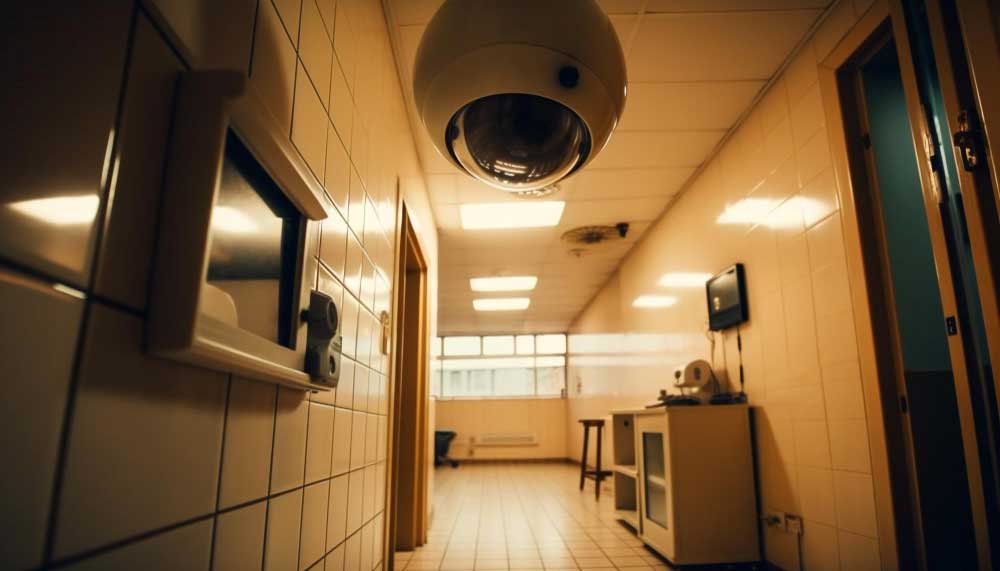Table of Contents
Choosing where your CCTV footage lives shapes cost, reliability, and privacy. Storage also decides how long you can keep video and how quickly you can pull clips when something happens. This guide sets out the trade-offs between network video recorders (NVRs), cloud storage, and on-camera microSD cards, then matches each option to common home and retail needs.
Why storage choice matters
Two questions sit at the centre of any decision. How quickly do you need to retrieve footage, and how resilient should the system be when the internet drops or power blinks? Add budget, privacy expectations, and site size, and the best path becomes clear.
Option 1: Network Video Recorder (NVR)
An NVR sits on-site and records streams from your IP cameras to hard drives. It works on your local network, so you can review footage even if the internet is down. That local access keeps retrieval fast. You can wire cameras with PoE for tidy power and stable data. Drive capacity sets retention, which you can expand by adding larger disks or extra bays.
Points to weigh up. NVRs carry an upfront cost and need a safe, ventilated spot. Drives wear out, so plan for periodic replacements. Remote viewing still rides on your internet link, so slow upload speeds will bottleneck off-site access. Good NVRs offer user accounts, audit logs, and basic cybersecurity features, but you still need updates and strong passwords.
Option 2: Cloud storage
Cloud plans ship video off-site in near real time. That adds resilience against theft or fire because footage lives in a remote data centre. Updates, scaling, and remote sharing are simple. You pay a subscription tied to camera count and retention. For many homes, the predictability of that monthly fee is easier than buying and maintaining hardware.
The catch is bandwidth. Continuous upload can chew through data caps and saturate upstream links. Smart codecs and event-based recording ease the load, yet busy scenes still push a lot of data. Retrieval speed depends on your internet, too. Privacy expectations matter here. Reputable providers offer encryption and regional storage options, but some organisations prefer to keep sensitive video on-site.
Option 3: On-camera microSD
Many cameras accept high-endurance microSD cards. This keeps recording independent on each device. If the network fails, the camera still writes footage. For small homes and simple installs, that simplicity is appealing. You can also use microSD as a fallback while your NVR or cloud link is offline.
Limitations are clear. Cards have modest capacity and finite write cycles. If a camera is stolen or damaged, its footage goes with it. Managing cards across many cameras gets fiddly. Retrieval usually means downloading from each camera or using the vendor’s viewer, which takes time in busy sites.
Quick comparison
| Factor | NVR | Cloud | microSD |
| Upfront cost | Medium to high | Low | Low |
| Ongoing fees | Low | Medium to high | Low |
| Works during internet outage | Yes (local access) | Recording depends on camera buffering | Yes (per camera) |
| Bandwidth use | Low (local) | Medium to high | Low |
| Theft/fire resilience | Medium | High | Low |
| Scaling many cameras | Good on larger NVRs | Very good | Poor |
| Retrieval speed on-site | Fast | Depends on internet | Slow per camera |
| Typical retention | Drive-limited | Plan-limited | Card-limited |
What suits homes
Most households want clear footage, simple playback, and fair costs. A compact NVR with four to eight channels balances price and control. It records even when the broadband wobbles and plays back quickly on a TV or laptop. Pair that with motion-based recording to stretch retention.
Cloud plans appeal to renters and apartment dwellers who prefer minimal gear. Subscription bundles with smart alerts cut setup friction. Just watch the upload load, especially on older NBN plans. For small homes, a mixed setup works well: microSD for on-camera backup and a light cloud plan for off-site clips. When planning home security cameras installation, check Wi-Fi coverage or favour PoE to avoid dropouts.
What suits retail
Shops and cafés need reliable retention, quick search, and solid evidence handling. An NVR or small server on-site remains the workhorse. You get consistent frame rates, better bitrates, and centralised control. Add a second drive in RAID1 for resilience. For multi-site groups, cloud dashboards make remote checks easy. A hybrid model shines here: record to an NVR for high-quality long retention, and mirror key events or thumbnails to the cloud for off-site protection.
Privacy and compliance notes
Australian rules vary by state, but good practice is consistent. Post clear signage, restrict who can view footage, and keep audit trails. Record only what you need, and set sensible retention periods. If staff work on-site, document your policy and train managers on proper access.
Cost planning and TCO
Think in three buckets. Hardware, subscriptions, and time. NVRs shift spend upfront, with disks replaced every few years. Cloud shifts spend to predictable monthly fees but scales with camera count. microSD is cheap to start yet costs time for manual retrieval and replacements. Over three to five years, hybrids often land best value because they reduce risk without doubling spend.
Practical tips before you buy
Pick cameras first, then storage. Match resolution, codec, and frame rate to your goals. Test motion settings so you don’t fill disks with empty frames. Set time sync correctly or your clips will be mislabelled. For homes, choose vendors with simple apps and good export tools. For retail, insist on role-based access and searchable timelines. When shortlisting providers, many readers start by searching CCTV installers near me and then checking licences, warranties, and references.
Recommended pairings
- Small home, two to four cameras: microSD in each camera plus a light cloud plan for alerts. Upgrade to a compact NVR if you want longer retention. This suits residential CCTV installation where budgets are tight and layouts are simple.
- Medium home or large block: PoE cameras into a mid-range NVR with two drives. Optional cloud clip backup for alarms.
- Single-site retail: PoE cameras into a rack-mounted NVR with RAID1 and UPS. Cloud dashboard for remote checks and off-site snapshots.
- Multi-site chain: Standardise on cameras and NVRs, then add cloud management across stores for health monitoring and quick evidence sharing.
If you’re comparing quotes for CCTV installation Brisbane, ask vendors to state expected retention in days, bandwidth impact, and who can access exported files. For complex homes or small businesses, a site survey helps avoid blind spots and poor cabling runs.
Final word
No single storage model wins every time. NVRs give speed and control. Cloud adds off-site resilience and easy scaling. microSD brings simple fallback and low cost. Pick the mix that matches your size, risk profile, and internet reality. If you’re planning commercial CCTV installation, speak with a security professional who can size disks, configure alerts, and set clear retention rules. Smart-WiFi can assist with design and rollout, from camera choice to commissioning, so your system works when it matters.




